A Synergy Between Austrian Business Cycle Theory and Best Business Practices?
(Yes I am purposely using buzzwords…)
Barry Linetsky sent me a note saying he liked my sushi article, and that it dovetailed with his own management philosophy of “Achieving More By Doing Less.” If you scroll through, you’ll see some charts that look vaguely like Hayekian triangles!
Don’t Vote! A "Parody" That Just Proves the Point
So Bryan Caplan was on a 20/20 spot on why too many ignorant people are voting. For whatever reason, the piece came off as a hit job on young people. (First clip below.) In response, some pro-voting group made a parody, that showed why older people shouldn’t vote (second clip below). But far from refuting Stossel, it just proved the point! There are plenty of ignorant young people and old people, none of whom should be voting. To repeat the old joke: I’m opposed to women getting the vote…but I think they should take it away from men too.
Incidentally, check out the “responses” that the pro-voting guys use in the original interview. Hard to argue with that!
Econ Bloggers Gain Clout
I saw this article linked from MR, and then Robert Wenzel just emailed it to me. Naturally it features plenty of quotes from my favorite blogger. It also says that MR gets 25,000 viewers a day. Hmm, we’re not quite there yet, kids. But just be patient.
Another I Told You So Re: Greenspan the Traitor
Robert Wenzel tipped me off to another cartoon taking advantage of Greenspan’s idiotic “confession”:

In case you’re wondering, this isn’t turning into a kid’s book about economics site. It just so happens that a lot of artwork is relevant, lately. Plus it helps to break up the monotony of my long-winded treatises.
Feds May "Invest" $600 Billion in Home Mortgages
All I can say is, if you are predicting price deflation over the next five years, then I think you are nuts.
The federal government is now considering backing up to $600 billion in home mortgages. Now I’m sure a lot of proponents will rush to explain that not all of that will go down the toilet, since not everyone will default. But of course, it is targeted to “troubled” loans; that’s the whole point. (You don’t need to rescue healthy people, unless you are one of the 9 largest banks in the country I mean.)
So it’s true, the government’s move will not actually increase budget deficits by $600 billion over the next few years. Let’s say $25 billion and call it a day.
This is one of the many problems of the original Paulson bailout. Once the government approved $700 billion for rich bankers, the floodgates were open. Now, if someone recommends any plan involving less than $50 billion, it doesn’t even sound serious. “Where you been, Jack?” The public has been desensitized to the astronomical* numbers, and so now we must prepare for trillion-dollar-plus deficits very soon. Maybe not in FY 2009, but I bet FY 2010. I am willing to make a public wager on that, if someone wants to take the other side.
* I am reminded of a funny Feynman quip where he says something like, “People say ‘astronomical’ to mean really large, but things in astronomy only go up to the billions. Yet the national debt is in the trillions. So I propose the term ‘economical’ for really big numbers.”
The Fed Really Wants to Test Whether Low Interest Rates Mess Up the Economy
Ironically, just after I posted (below) that Brad DeLong has finally come around to questioning whether Greenspan made the right move in cutting interest rates so much, I see the headlines that the Fed has once again lowered rates down to 1%.
Let me say it once again, for the record: Suppose that Ludwig von Mises and Friedrich Hayek were right, and that really low interest rates (caused by the central bank flooding the market with artificial credit) screw up the market’s coordination over time. Then that means we are now sowing the seeds for an even bigger crisis four or five years from now.
It’s true, many people would say, “That’s irrelevant. Right now the pain is so bad, we need to stop the bleeding and deal with future problems down the road.”
However, that’s exactly what people were saying in light of the “unacceptable” pain that would have occurred due to the dot-com crash and 9/11 attacks. It never occurred to people back then, how bad the housing boom would end up being.
Oh, another little twist: Keep in mind we will probably have very liberal Democrats running all branches of government when the chickens come home to roost. So on top of the Fed distortions, let’s throw in some tax hikes, and maybe some explicit price controls too. And maybe some more concessions to unions–why not?
Two Interesting Posts from Arnold Kling
In this one, he quotes his former classmate, Bob McDonald, who says in an Oct. 9 post:
[Bob McDonald:] At this time, the government is the only agent in a position to intervene, but the government is also part of the problem. No private solution will emerge with the government hovering in the background, making decisions on the fly (will a particular institution be rescued or abandoned?) and essentially commandeering markets.
This is in synch with my much more zealous LRC piece in late September:
[Murphy:] And yet, there is no rhyme or reason to the government’s decisions. Lehman Brothers was allowed to fail. In essence, you’ve got a massive beast stalking the financial markets. This creature has many trillions of dollars ultimately at its disposal, and oh yes, I should add: It is not afraid to send armed men to your house if you should ever really cross it. In this environment, is it any wonder that the credit markets are “frozen”? When the SWAT team bursts into your kitchen window, you freeze up, right? Why should things be so different on Wall Street?
(BTW I’m not accusing McDonald of plagiarism, I’m just saying you heard it here first.)
Then in another post, Kling has some very revealing quotes that show just how bankrupt mainstream macroeconomics is. Here’s Bernanke in an interview he gave to a guy writing a book (not sure of the date of this):
[Ben Bernanke:]A price target that avoided deflation would have de facto forced abandonment of the gold standard and would have eliminated a major channel of depression…So I do agree that stabilizing prices is the ultimate lesson of the Great Depression and also of the 1970s. There really is nothing more a central bank can do for domestic economic stability than make sure that inflation remains low and stable over long periods.
So do you see why, in retrospect, that’s pretty damning? There was price stability (in consumer goods) during the 1920s–that’s why monetarists think the Fed did a great job during the Roaring decade. And there was very low consumer price inflation during the housing boom–again, that’s why monetarists thought the Fed rates reflected changes in the “real economy,” and weren’t generating the boom in housing. Oops.
Now Kling also quotes Brad DeLong who (courageously) admits that he didn’t second-guess Greenspan’s decision with interest rates at the time–or even six months ago. It is only now that he is having second thoughts:
[Brad DeLong:] The current financial crisis has its roots in Greenspan’s decision to keep interest rates very low in 2002 and 2003 to head off the danger of a deflation-induced double-dip recession, and his subsequent decision that the costs of cleaning up after a housing bubble were likely to be less than the costs of the high unemployment that would be generated by a preemptive attempt to pop a housing-speculation bubble. Two years ago, I would have said that Greenspan’s judgment here was correct. Six months ago, I would have said that his judgment was probably correct. Today — in the middle of the largest nationalizations in history — I can no longer state that Greenspan made the right calls with respect to the level of interest rates and the housing bubble in the 2000s.
Seriously folks, why oh why can’t these economists just admit that central planning is a bad idea when it comes to the capital markets? Why is that so hard? Is it because the Austrians have annoying personalities (and yes many of us do!) and our gloating would be really really obnoxious?
More Confusion on That #$# Bond Chart
OK here it is once again folks:
Let me review the standard interpretation, and then repeat my criticism of that standard view. But then I will bring up Matt Machaj’s devastating critique of my explanation. (Yes, that’s right–by the end of this post, you will see that I have no clue what is going on. But it serves a purpose to show why no one else does either, right?)
Standard Story: “The market expects (price) deflation. If the CPI actually goes down, then the Treasury reduces your principal on the TIPS you are holding. So that’s why investors insist on a higher TIPS yield than nominal yields on regular Treasurys; with a negative purchasing power premium, the usual gap between nominal and TIPS has reversed itself.”
Murphy’s Objection: Look up at that chart. In January 2008, the TIPS yield was about zero, while the nominal was 2-and-change. So presumably, at that point investors were freaked out and just wanted to maintain their purchasing power (i.e. insisted on a real yield of roughly 0%), and they were forecasting (as they had been since 2003) moderate CPI increases of a little more than 2%.
Now, suppose the conventional story is right, and that since January, people have gotten much more pessimistic about the economy, and their expectations of CPI increases have gotten steadily lower, as the weeks rolled by. I submit that we would have seen the TIPS stay smack dab at roughly zero–i.e. investors would not insist on higher real yields as the economy fell apart–and the yield on nominal Treasurys would have come down to zero as well, since investors would stop building in a purchasing power premium.
And yet, that is obviously not what happened, as the chart above illustrates so well. Starting around June, the two series moved in opposite directions–the first that had happened in the history of the 5-year TIPS. (I.e. these particular contracts were only offered by the Treasury starting in 2003.) And now that the TIPS yield is higher, note that it is the highest it has ever been. If people are expecting price deflation, and this is the worst economy since the Great Depression, then why the heck are investors still insisting on nominal yields of more than 2.5%? Surely investors haven’t gotten greedier since January, and surely (according to the Standard Story) investors weren’t predicting deflation back then as much as they are now. So why are nominal yields higher now than back in January?
My (partial) explanation thus far to explain all this has been that investors are worried that the Treasury will fudge on the TIPS contracts. Rather than outright defaulting on conventional Treasurys, the government will first cut corners by not adjusting the principal on TIPS, or by pressuring the BLS to underreport the “true” increase in CPI (i.e. making that announcement even more bogus than it already is). So for example, if investors expect actual CPI to rise 7%, but the BLS reports it as 4%, then investors would insist on 3% points more in their TIPS yield to compensate.
=========
Matt Machaj threw a wrench into my explanation above. My theory explains why TIPS could shoot up, but by itself it doesn’t explain why the TIPS should now be higher than the nominal yield. A quick example: Suppose investors predict actual CPI increase of 7%, but fear the BLS will report it as 4%. And suppose the investors want a real yield of 0%. So the TIPS yield would shoot up to 3%, just like it has. So far, so good.
But Matt points out that the nominal should still be higher; it should be 7%. (Investors expect CPI increase of 7%, and they want a 0% real return.) So my observation about BLS hanky-panky works here, if people are saying, “The market expects inflation of 4%.” I can say, “No, they expect 7% but fear fudging of 300 bps.” Yet Matt is still right, that I haven’t explained why the nominal should ever be below the TIPS.
=============
What’s the resolution? I regret to say that I don’t know. That chart above is defying explanation. We econ PhDs are like Scotland Yard trying to investigate a crime scene, and Sherlock Holmes has not showed up yet to explain what must have happened. All I know is, I feel uncomfortable with all of the “explanations”–mine included–offered thus far. Each of them explains one feature of the chart above, but none explains all of its features.
One last twist: Something that might be going on here, is that nominal yields can’t fall below zero. This is because investors can always hold actual currency. So if people expected price deflation of 3%, then they would need a TIPS yield of 3% just to break even (because the Treasury will lower your principal on a TIPS contract if the CPI falls).
However, that still doesn’t explain why the nominal yields are so high. If investors are happy with a 0% real return, and they drove TIPS yields up to 3% because they fear price deflation, then why haven’t nominal yields (on 5-year contracts) fallen to zero? I.e., why are investors insisting on a higher expected real return on (much safer) nominal Treasurys, than they are on the TIPS contracts?
I suppose you could invoke a rising fear of outright default, so that’s why nominal Treasury yields are staying up there. But I feel very uncomfortable that I have to invoke at least three changes in unseen forces (fear of default, BLS hanky-panky, and price expectations) that change juuuuust right in order to reconcile my explanation with the prima facie refutation provided by the data. Now I know what it feels like to work for the IPCC.*
* A little climate change “denier” joke for you.
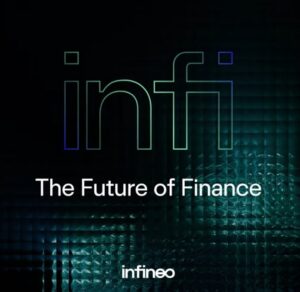
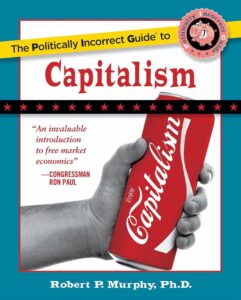
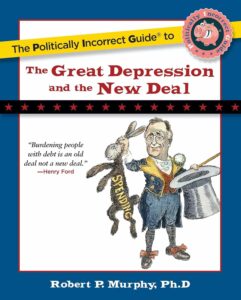
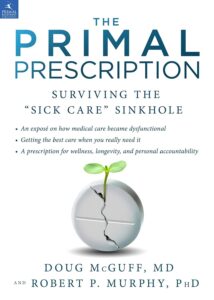


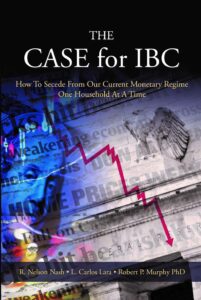
Recent Comments